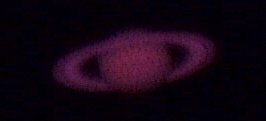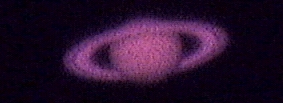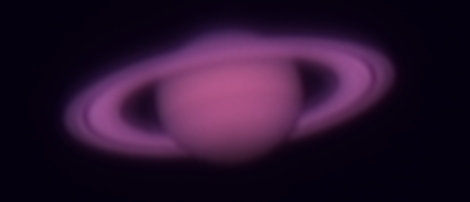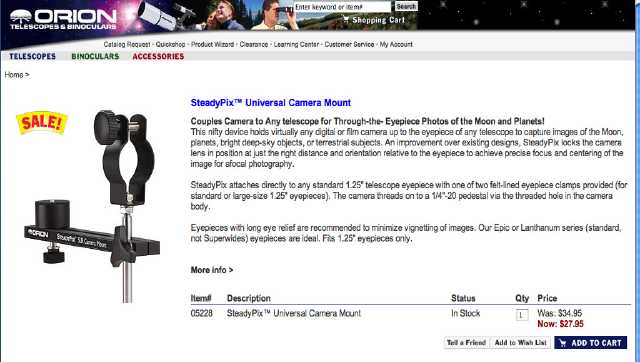Last updated: 30 March 2006
|
Last updated: 30 March 2006 |
This page documents astrophotography comments, tips, and photos. Contributions welcome. Be certain to see the other articles on the main Astrophotography page.
Subject: Really newbie Astrophotography question Sent: Tuesday, March 28, 2006 21:57:03 From: Ted Semon (tedsemon@comcast.net) Last year, I bought my son an ETX-90 for his birthday and this year we are going to venture into the realm of astrophotography. I've never done this before and so am reading up on it, on your site and at the Meade site. In reading about the Meade DSI, and looking at the videos they provide, I see that the DSI connects directly to the telescope, bypassing whatever eyepieces there are. Questions: 1. Does this mean that all magnification is done electronically, rather than optically, or am I missing something really obvious? 2. What is the purpose of the Focal Reducers that Meade sells as DSI accessories? 3. What is the purpose of the Color filters on the DSI? I'm sure these newbie questions are all answered somewhere, but I'm darned if I can find it. If you could point me to the "Ultra-beginners starter tutorial", I'd be most grateful. Thank you. Ted Semon www.undernoillusions.blogspot.com PS I'm using your RSS news feed (with my FeedDemon News Reader) and it seems to work just fine!Mike here: Imagers like the DSI are single magnification only. If you want to magnify the image the DSI "sees" you can use a Barlow Lens, just like you would with an eyepiece. A focal reducer (or a wide field adapter) is the opposite of a Barlow Lens, it reduces the magnification (by effectively reducing the telescope focal length). One of the DSI models is "black and white" only so the color filters allow colors to be captured, one image at a time. The images are then combined into a single color picture.
And:
Thank you for your prompt reply, Mike. I guess I'm just mystified as to how people get pictures of the Deep-Sky images with an ETX-90, the images that I find on your website. It doesn't seem possible to me that these galaxies can be visible without more magnification. I guess I'm going to find out :) TedMike here: The camera resolution makes up for the small image (to some degree).
Subject: etx 70 at Sent: Tuesday, March 28, 2006 14:07:08 From: RON GUPTILL (TRAZAM@CFL.RR.COM) Hi I appreciate any help you could give me. I have a sony f828 camera and would like to find a low cost solution to take astrophotography. How do I connect my camera to the telescope? thanksMike here: See the Helpful Information: Astrophotography page as well as the Accessory Reviews: Astrophotography for LOTS of info. For low cost you can try one of the adapters that holds the camera over the eyepiece. However, be certain to read the reviews of those first.
Subject: Re: Astrophotography Sent: Monday, March 20, 2006 00:31:44 From: rgsylvester@mmm.com Thanks for the reply. Correct me if I am wrong, but I understand the Schimdt Newtonian to be a rich field scope and good for deep sky imaging. But to get it to do its job with planets and the Moon, what esle do I need? Thank You and Have A Nice Day! Row Gordon Sylvester SingaporeMike here: The SN is excellent for deep sky work but can also do planetary and lunar work; you just need higher power (shorter focal length) eyepieces (for visual work and/or a Barlow Lens (for visual as well as imaging).
Subject: Astrophotography Sent: Thursday, March 16, 2006 02:06:03 From: rgsylvester@mmm.com (rgsylvester@mmm.com) I bought a basic 60mm scope some years back as a beginner and spent some time on it. I am now looking for something with more capability and I am thinking about the Meade LXD75 8" SN coupled with the DSI Pro 2 CCD imager and the ETX 125AT with the same imaging setup. Based on your experience with the ETX/LXD55, I would like to know if the scopes own motor drive is sufficient for decent beginner type imaging or do I need autoguiding? By beginner type imaging, i mean being able to takes images of the key planets, lunar surfaces and the more common deep sky objects. From an aperture standpoint, do you see a clear distinction in image quality between the ETX 125 and the LXD55/75 8" SN? What I think is about the trade off between portability of the ETX and light gathering ability of the 8" SN. Just would like to know your opinion. Thank You and Have A Nice Day! Row Gordon Sylvester Singapore.Mike here: Yes, you can take excellent images (with practice) using either of those telescopes. Autoguiding can help but isn't necessarily required but keep in mind that the ETX will need to be mounted in polar mode for that. As to a comparison, note that the SN is a short focal telescope compared to the ETX-125 so a direct comparison isn't possible but the larger aperture of the 8" will certainly allow more light to reach your eye/imager.
Subject: solar eclipse photography with Meade ETX 125 EC astrotelescope Sent: Thursday, March 9, 2006 10:00:27 From: neelima thatte (astro_neelima@yahoo.co.in) I am an amateur astronomer from Pune (India). I am a child specialist by profession; but interested in astronomy. I've done a bit of astrophotography of constellations, meteors, transits,lunar phases etc. I tried TSE photos for TSE 2001 from zambia using 500mm telephoto lens. Now I am planning to do prime focus photography of TSE 29th march 2006 from Antalya(turkey) using my Meade ETX 125 EC which has a focal ratio F15 and focal length 1900mm. Will you please guide me regarding the exposure time for various phase of totality, film speed etc. Also is it possible to cover full view of diamond ring including the scattering rays? I am aware that it may not be possible to shoot outer corona thr' it. What is the soution? I humbly request you to kindly guide me in this matter. Thanking you in anticipation, Sincerely yours, Dr. Mrs. Neelima Thatte Kothrud, Pune (INDIA)Mike here: Do lots of test exposures well before the day of the eclipse (like start now!). You will use the same exposure value for most of the partial phases. If your camera has an exposure meter, just use that. Otherwise, the exact shutter speed will depend upon the ISO rating of the film you use AND the type of solar filter you attach to the objective end of the ETX. For totality, you will probably not want to have the camera attached to the telescope as the field of view will be too narrow to get the full disk unless you have a focal reducer or wide field adapter of some sort attached to the telescope. For totality, take LOTS of exposures, bracketing by 1/3 or 1/2 f/ stops.
And:
Thanks a million Sir for your valuable tips. I've already taken test exposures with ISO400(kodak). The image size is just above 17mm leaving about 4mm clearance on each side. Presently I'm using full aperture mylar filter and I'm trying to get glass filter. I have made arrangements for piggy back attachment as well. Also I'm practising with an unloaded camera to take as many exposures as I can in 3 minutes with different shutter speeds & have reached upto no. 30 so far. Thanks once again Dr. Neelima Thatte
Subject: ETX-105 AstroPhoto Help
Sent: Monday, March 6, 2006 21:07:23
From: dankrszal@comcast.net (dankrszal@comcast.net)
I have a Meade ETX 105 on the way here after sending back my new meade
80at that was bad when I got it so I thought i would just go with a
bigger one, well to the point I know U are busy so I was wondering will
the 105 handle a Canon Rebel 650 piggyback ? also with it word ok with
it on the back of the 105? I heard there might be a problem with the
tracking, is this true? could I use a counter weight on the front to
handel the weight of the cam on the back, what do U think i sould do?
Also I am very new at all of this, I started just about a month ago with
a DS114 and then went to the 80 then to the 105, wasn't real happy with
the 80 it had a problem with the fosicing out out of the field of view,
you could see that the top that moves in and out would pull one way when
u turn the ithe fos. then the other way when u turn it the other way
everything would got out of the view. well forget the 80 and now I got a
105 on the way, so can U help out with this weight thing, I just want to
know if it will work or not,
thanks
Dan
Mike here: You shouldn't have any problem with piggyback photography; just keep in mind that you will need to use Polar mounting for that. You can also do photography through the rear port with the proper adapters, assuming the camera has a removable lens. I don't know how heavy the camera is but if you need to add a counterweight, see the Helpful Information: Astrophotography page for lots of info on counterweights. As for tracking, keep in mind that most telescopes will require some "assistance" with tracking during long duration exposures by manually correcting during the exposure. For piggyback just use a high power eyepiece and keep a bright star centered by using a slow slew speed on the Autostar. Minor tracking errors won't show up at the image scale of the camera with shorter focal length lenses.
Subject: CCD Imaging Beginner Sent: Thursday, February 23, 2006 10:19:36 From: John M. Urbanchuk (jurbanchuk@comcast.net) I am becoming comfortable with my ETX 125PE and am considering taking a run at astrophotography. My digital camera (Canon Powershot S20) is getting long in the tooth and it seems that the adapters and associated gizmos would cost almost as much as a Meade DS (OK not quite, but you get the idea). I have been reading the postings on your website about astrophotography and examining the equipment that submitters of photos indicate they use. Confusing to say the least! Any thoughts on the DSI versus webcam (the Philips TouCam seems widely used)? I notice that you do not use the DSI. What imaging equipment do you use? Thanks, JMUMike here: I mostly use my Nikon D70 DSLR now. I have used an LPI and SAC IV imagers and other digital cameras. As to webcam vs DSI, that really depends upon your expertise. If you don't want to have to do a lot of post processing work yourself, get a DSI. There is a significant learning curve either way but the Autostar Suite software with the DSI will streamline a lot of the work for you.
Subject: CCD Imaging Ignorance Sent: Sunday, February 19, 2006 14:57:28 From: dennis sebranek (denmikseb@yahoo.com) I owned my last telescope 30 years ago and managed to take a few accepable photos of the moon at prime focus with a Canon AE-1 camera and a homemade camera bracket. I am now getting back into astronomy and know I will eventually want to take planetary and deep space images at some point. I will be getting a Meade LXD 75 8" Schmidt Cassegrain soon, but I am COMPLETELY IGNORANT about taking self-guided CCD images. The web sites just add to the ignorance, there are so many different products and accessories. What I'm asking is: What do I need to get started in CCD imaging, can the LXD 75 be self-guided, what do I need to do that? Can you give me some web sites/books that can take me through this step by step? Thanks, DennisMike here: I suggest starting simple and get a Meade DSI or DSI II. That will do what you ask. But don't get me wrong, it is not that simple and certainly is NOT a simple imager. It is just that for the price vs performance, it gives the best results for Autostar telescopes.
Subject: Astrophotography on my Mac? Sent: Saturday, February 18, 2006 11:35:41 From: Kirk & Shannon Moberg (moberg@mchsi.com) I've been searching the internet for a long time trying to find out whether it's possible to do astrophotography on a Mac or not. I finally found your website...thank God! Could you tell me what my options are? I want to get a more powerful camera, not an LPI or a modified webcam, but I'm also on a budget. I was thinking about a Meade DSI or DSI Pro or a SAC 7, or the Orion StarShoot Deep Space. As far as I can tell Meade doesn't support Mac very well, I can't find any information on the Orion StarShoot, and SAC seems like it supports Mac in some cases but not others (and it doesn't help that the SAC 7 is discontinued). Is there any separate software by other companies that would enable me to use a CCD camera with my Mac? Thanks, Justin MobergMike here: I believe that SBIG has Mac OS X drivers for their imagers. There is also Keith's Imager which works some some imagers but I haven't really used it. Of course, you can start with a digital camera and grow from there. There are applications for stacking images like Keith's Imager Stacker and Lynkeos (which I use now).
Subject: Saturn raw frames - some tips Sent: Monday, February 13, 2006 07:54:45 From: Dieter.Wolf@DNSint.com (Dieter.Wolf@DNSint.com) If you have one average avi under average seeing conditions you may be able to extract 100 'reasonable good shots'. Optimizing this summary ALWAYS demands a lot of compromise (do it harder and get more details and it looks 'overtuned'; do it softer and you loose details) But if you have over 8000 frames and more than one third of them is really excellent you have a bunch to work with. Use one part of them for details, another one for colors, a third one for dark areas, a fourth one for bright parts, one for smooth looking, one for...and adjust the layers until you're satisfied. My 'normal' way in planetary imaging (I'm not familiar enough with Registax) is: - record avi with PHILIPS tool - align and stack frames with K3CCD tools (using 2x magnification) and do first post-processing (set dark and white, adjust colors, do a slight sharpening) - use .bmp until final image - adjust RGB position in Giotto - remove noise with Neat Image - stronger sharpening / filtering in Giotto - working with layers and color / brightness in PaintShop pro - remove final noise and crop to about 70% and save final .jpg Please find attached two accidental frames out of two different avi's, a 500 out of 1200 frames summary of a third avi and a quick and dirty processed final of this summary (because I already removed my intermediate steps)


cs, Dieter (Munich, Germany)
Subject: proper balance
Sent: Saturday, February 11, 2006 22:11:33
From: Ben (benzene0377@hotmail.com)
I have fashoned a weight set for my ETX105 PE but now I'm not sure
exactly how to balance. I have just started to use polar mode. While in
polar mode when trying to image im still getting streaks after cal
motors and train drives. what is a good procedure for balancing the ETX?
And at what angle should the scope be balanced? when the OTA is level or
when it is near the angle that I will be imaging at? There is quite a
bit of weight hanging off the back side, I am using a Nikon CP995 with a
scopetronix 14mm wide angle eye piece. While I polar align (using easy
align method) should I have the weights on if the camera is not on (so i
can see through the eye piece) or does that matter at all also?
Thank for all your help as always!,
Ben V.
Miami, FL
Mike here: The streaks you see could be due to three factors, either individually or in combination. Yes, balance can cause it IF the OTA is slipping during tracking. That would typically be evident as breaks or lumpiness in the streaks. If the streaks are smooth then either the polar alignment was not accurate OR the Polar axis is not precisely parallel to the Earth's rotational axis. As balancing, with the axes unlocked when you put the OTA/camera system at some orientation there should be no movement of the system. It just stays where you put it. And yes, the position of the counterweight is position dependent.
Subject: how long Sent: Thursday, February 2, 2006 07:43:59 From: Simon Parsons (simon@parsonss25.fsnet.co.uk) when using a fixed tripod exposure at the london lattitude iam able to take sharp shots of the stars at 25 seconds facing north. if i shoot the same looking south they trail. iam going on hoilday to iceland and also wish to take night shots. will i be able to take the shots at longer exposure times because iam further north (whilst shhoting every direction). look forward to your reply simon parsonsMike here: Your message was originally classified as SPAM and deleted UNREAD due to the ambiguous subject line. Please read the Email Etiquette on the ETX Site Home Page. Thanks for understanding.
Subject: Scopetronix Maxview 40 Sent: Saturday, January 28, 2006 14:33:17 From: Daniel Hackstedt (webmaster@daniel-hackstedt.de) I was thinking about getting into Astrophotography, but dont really know what adapters to buy, there are too many. I have a ETX 125 and a Canon Powershot S50, and a Canon 10D. I would like to be able to perform planetary and lunar imaging as well as capturing nebulas. The Scopetronix Maxview 40 and Canon S50 Adapter Kit came to my attention. (http://cgi.ebay.com/ScopeTronix-MaxView-40-Canon-S30-40-45-50-Adapter-Kit_W0QQitemZ7541540216QQcategoryZ29954QQssPageNameZWD1VQQrdZ1QQcmdZViewItem) What do you think about that? Will the magnification be high enough for planetary imaging? Should I get other Scopetronix eyepieces with the Canon S50 Adapter Kit? What adapter/eyepiece do you recommend? Thanks, DanielMike here: The Scopetronix MaxView is a fine adapter. You can see my review of their MaxView II on the Accessory Reviews: Astrophotography page. As to their eyepieces, there are reviews on the Accessory Reviews: Eyepieces page. Keep in mind that eyepiece projection astrophotography requires a steady mount and no vibration from any source.
Subject: Astrophotography Sent: Tuesday, January 17, 2006 10:01:06 From: Tony DeLuca (2001as@adelphia.net) I have a small etx 60 mm Meade scope and was hoping to take image's of the Moon with my new Lumix FZ30 Camera. I found this thing on Orion and was wondering if you feel it's worth the investment. The FZ30 is a fairly big camera and I want to be sure the little etx can support this hanging onto the eyepiece. Do you have any photo I can see shot through the eyepiece of a scope? Thanks for your help..... All Good Wishes, Tony DeLucaMike here: This is essentially the same as the Scopetronix "Digital Camera Adapter" that I discuss on the Accessory Reviews: Astrophotography page. It has the same capabilities and limitations.
Subject: ETX 105PE Balance
Sent: Wednesday, January 11, 2006 17:13:46
From: Ben (benzene0377@hotmail.com)
I was wondering what techniques I could use to balance my ETX 105PE when
I attach my Nikon CP 995 with the Scopetronix adaptor eye piece. I would
appreciate any advice, thanks again Mike!
Take care,
Ben V.
Miami, FL
Mike here: See the counterweight articles on the Helpful Information: Astrophotography page.
Subject: Focal Reducer and Nikon 995 Question Sent: Saturday, January 7, 2006 20:18:39 From: Luis Villa (ETX_125EC_from_arizona@msn.com) I will be buying a Focal Reducer, and most likely from Scopetronix, but I am still confused!! This is what I am confused with.. I found this on the Scopetronix Web Site, "The Field Doubler is designed to allow for a wider field imaging; it is not designed for visual use and the scope will not reach focus if a diagonal is inserted into it." I have an ETX-125, and perhaps I am the only one that is confused or lots of other people are, but just do not admit it!!... OK, so how do I focus? Using the flip mirror? Using the computer? IF it will work with the DSI, or my LPI, and my ToUcam, why won't it work with my Nikon 995? I would prefer using my 995 over the LPI or the ToUcam--the 995 CCD is much more light sensitive than the others... (except perhaps the DSI, which I don't own.) I have e-mailed not only Scopetronix, but also other vendors, and all say the same thing, the focal reducers will NOT work with the 995 and I can't insert an eyepiece.... So how do I focus???? Hope either you or site visitors can help... LuisMike here: From the description and what Scopetronix has said, it appears that their Focal Reducer is not designed for use with eyepieces. It does accept 1.25" accessories like the LPI so while it would accept an eyepiece, the focal plane from the Focal Reducer may be where an eyepiece can't focus on it. With the Coolpix (and other non-removable lens cameras) you have to do afocal photography using an eyepiece. And since you can't focus the eyepiece you can't do afocal photography.
Return to the top of this page.
Go to the November-December 2005 Astrophotography - Tips page.
Go to the September-October 2005 Astrophotography - Tips page.
Go to the July-August 2005 Astrophotography - Tips page.
Go to the May-June 2005 Astrophotography - Tips page.
Go to the March-April 2005 Astrophotography - Tips page.
Go to the January-February 2005 Astrophotography - Tips page.
Go to the October-December 2004 Astrophotography - Tips page.
Go to the July-September 2004 Astrophotography - Tips page.
Go to the April-June 2004 Astrophotography - Tips page.
Go to the January-March 2004 Astrophotography - Tips page.
Go to the 2003 Astrophotography - Tips page.
Go back to the Astrophotography Page.
Go back to my ETX Home Page.